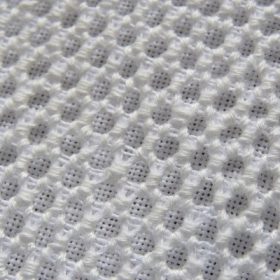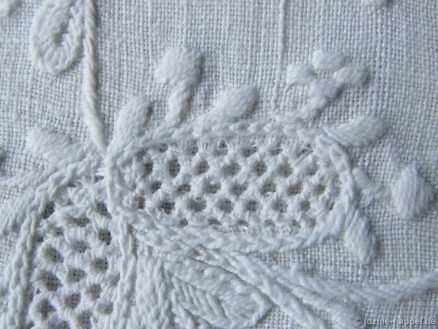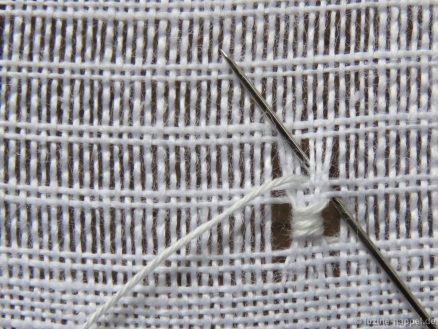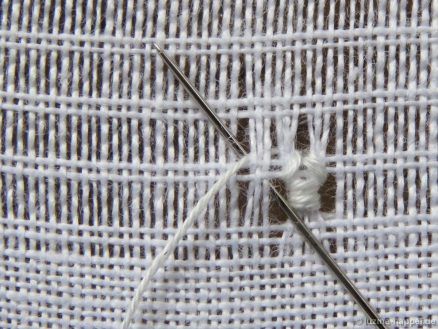category: simple drawn thread filling pattern
linen used: 13.5/cm thread-count
threads used: coton à broder No. 20
stitches used: Wrap stitches
horizontal center axis: quadruple withdrawn thread line
The flower motif with the openwork leaves is found on the Schwalm Parade Cushion Border (B).
As you can see from the detail of the original embroidery, it is a kind of staggered pea holes, which do not have Four-Sided stitches as a basis, but consist exclusively of wrap stitches.
I have tried different ways and recommend embroidering the pattern as described below.
Alternate withdrawing 4 fabric threads in one direction and leaving 2 in between. The pattern builds up from the bottom right to the top left.
To do this, wrap around 6 fabric threads of the lowest wide withdrawn thread line 3-4 times.
*Then slide the needle diagonally to the top left under the horizontal pair of fabric threads to the next withdrawn thread line and bring it up between the third and fourth thread of the bundle.
Repeat the stitch once,
return to the starting point and slide the needle under the wrapped bundle of threads to the opposite side.
From there, the needle is led diagonally to the top right crossing over the horizontal pair of threads, inserted again between the third and fourth thread of the bundle and emerges again at the starting point.
Once again, the needle is led diagonally to the top right crossing over the horizontal pair of threads, inserted again between the third and fourth threads of the bundle. This time bring the needle up 6 fabric threads to the left.
The 6 fabric threads lying on the needle form the next bundle. But before you can wrap it, you have to connect the left 3 threads to the underlying pair of threads.
To do this, the needle is led diagonally over the pair of threads to the bottom right, inserted next to the wrapped bundle and brought up again at the starting point.
This stitch is also repeated once,
to then wrap the two bundles of 3 threads together.*
Repeat the steps of working(*).
Reaching the top edge, turn the work 180° and embroider the next row next to the first.
In the places where the thread pairs are already wrapped, these steps can be omitted.
Some rows – not all – move close to the previous one. You can move the bundles slightly with the needle tip to achieve even distances.
In this way, an airy pattern is created that is suitable for filling not too large areas.



















Leave a Reply